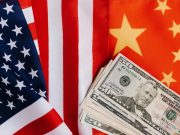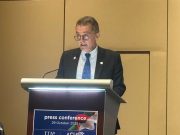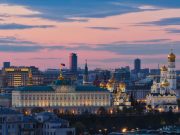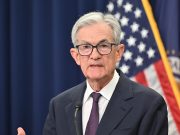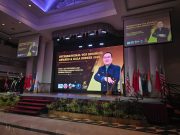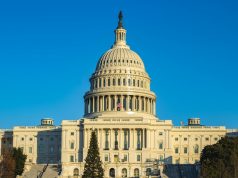
(Singapore, 13.11.2025)The U.S. Federal Reserve is widely expected to cut interest rates again in December as signs of a softening job market continue to emerge, according to a new Reuters poll of economists. Despite mixed signals among policymakers and the complications caused by the ongoing government shutdown, a strong majority of analysts believe the central bank will move ahead with another 25-basis-point reduction.
The poll shows that 80% of economists — 84 out of 105 — expect the Federal Open Market Committee (FOMC) to cut rates again at its December 10 meeting, bringing the benchmark federal funds range down to 3.50% to 3.75%. If the Fed follows through, it would be the third straight cut since September. Another 21 economists expect no change.
This represents a slight increase in expectations compared to last month’s survey, even though Federal Reserve officials remain publicly divided about the need for further easing.
Last month’s quarter-point rate cut was contentious, drawing rare dissent from more than one side of the committee. Fed Chair Jerome Powell has since cautioned that a December cut is not guaranteed, stressing that any decision will depend on the latest available indicators.
However, that data has been limited. The United States is still facing the longest government shutdown in its history, resulting in delays or gaps in key economic releases. As a result, policymakers are being forced to operate with less clarity than usual ahead of a major decision.
Abigail Watt, U.S. economist at UBS, said the Fed’s next move will depend heavily on whether new data contradicts the belief that the labor market is weakening.
“There’s a general sense that the labor market still looks relatively weak and that’s one of the key reasons we think the FOMC will continue with the December cut,” she said. “But the risk to December will be data suddenly dispelling that sense of weakness.”
A temporary funding bill recently passed by the Senate could allow some government agencies to resume operations and release overdue data before the meeting, easing some of the uncertainty.
While data has been patchy, most economists agree the labor market is losing momentum. In a separate question in the poll, nearly 70% of respondents — 36 of 52 — said job growth has stayed roughly the same since the shutdown began, even as private-sector surveys show rising job losses. Sixteen said hiring has worsened, and none said it has improved.
The unemployment rate, last officially reported at 4.3% in August, is expected to stay unchanged in the final quarter of this year. Poll medians show the jobless rate edging up slightly to average 4.5% next year as economic growth slows.
Still, some economists caution that the labor market is not in freefall.
“The labor market is cooling, yes, but it’s not collapsing by any means,” said Stephen Juneau, U.S. economist at Bank of America Securities. “We’re still seeing low hiring, but we’re not seeing a ton of firing either.”
However, he also warned that December’s decision is not guaranteed: “December may not be a done deal unless Powell sees clearer signs that downside risks to the labor market are truly materializing.”
Inflation Pressures Still Persistent
Even with hiring slowing, inflation remains a key concern. The Fed’s preferred gauge — the Personal Consumption Expenditures (PCE) price index — has stayed above the 2% target for more than four years, the longest stretch since 1995.
The poll indicates that economists expect PCE inflation to remain above 2% through at least 2027, suggesting the Fed will continue balancing between supporting growth and managing price pressures.
Josh Hirt, senior economist at Vanguard, said the prolonged period of above-target inflation could eventually become a credibility challenge for the Fed.
“It’s one of those factors people may not notice for a long time… and then they do all at once,” he said. “We will take a little bit more caution around viewing tariff inflation purely as temporary.”
Looking ahead, nearly half of economists expect the Fed to cut rates again in the first quarter of next year, lowering the federal funds rate to 3.25% to 3.50%. But views on the longer-term path are more varied. The survey found no clear majority on where rates will end up by the close of 2026.
The uncertainty reflects the broader debate over the durability of U.S. economic growth and whether inflation pressures will reassert themselves.
U.S. Growth Expected to Slow Sharply
After growing 3.8% in the second quarter and an estimated 2.9% in the third, the U.S. economy is projected to lose momentum in the final months of 2025. Poll medians suggest growth will fall to 1.0% in the fourth quarter as high borrowing costs, weaker hiring, and slowing consumer demand weigh on activity.
From 2026 through 2027, growth is expected to average about 1.8% annually — roughly in line with what Fed officials see as the long-run non-inflationary growth rate.
With limited data, persistent inflation, and a labor market that is softening but still resilient, the Fed faces one of its most closely watched decisions in years. While a majority of economists expect another rate cut in December, the internal divisions within the central bank — and any new data released if the government reopens — could still reshape the debate.
For now, the consensus is clear, a slowing economy needs more support, and a December rate cut remains the most likely outcome.






